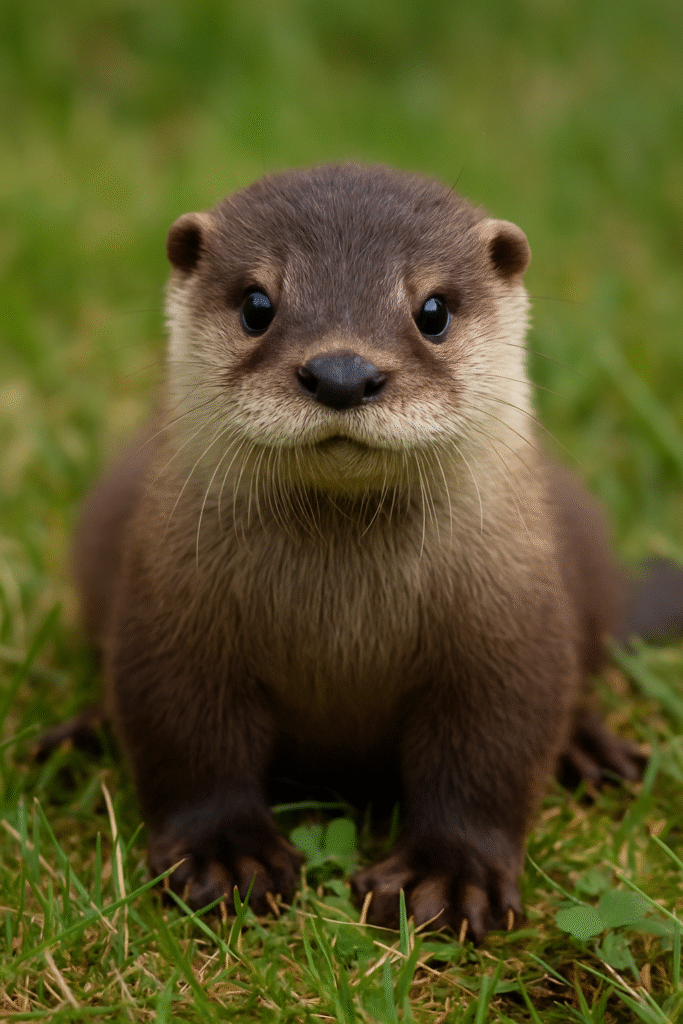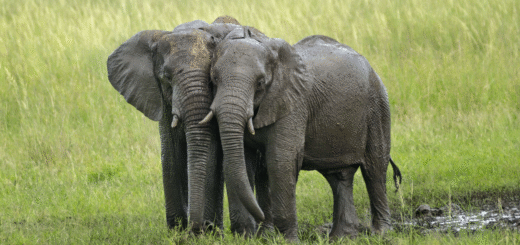The Playful Otter: Nature’s Adorable Aquatic Acrobat
The Playful Otter – Otters are one of the most charming and endearing creatures found in the wild. Known for their playful behavior and striking appearance, otters have captured the hearts of animal lovers around the world. In this article, we’ll dive into everything you need to know about otters, from their fascinating behavior and habitat to their unique physical traits and conservation efforts.

What is an Otter?
An otter is a member of the family Mustelidae, which includes weasels, badgers, martens, and ferrets. There are several species of otters, with the most commonly known being the river otter (Lontra canadensis), sea otter (Enhydra lutris), and the giant river otter (Pteronura brasiliensis). These playful animals are known for their sharp intelligence, sociable nature, and affinity for water.
Otters are semi-aquatic mammals, which means they spend time both on land and in the water. Their long, sleek bodies are well-adapted to life in aquatic environments, and their webbed feet and thick fur allow them to move efficiently through the water while keeping warm in cold conditions.
Physical Features and Adaptations
Otters are instantly recognizable thanks to their adorable faces and sleek, streamlined bodies. Here are some of the key physical characteristics that make them unique:
- Fur: Otters have incredibly dense fur that helps keep them insulated in cold waters. An otter’s fur is so thick that it has about 600,000 hair follicles per square inch! This coat traps air and prevents water from reaching their skin.
- Webbed Feet: Otters have webbed feet, making them excellent swimmers. Their paws also have sharp claws to help them catch prey and hold onto rocks when they need to stay in one spot.
- Long, Flexible Tail: Otters use their long, muscular tails as rudders when swimming. It helps them steer and balance, much like a swimmer uses their body to adjust direction in the water.
- Sharp Teeth and Powerful Jaws: Otters are carnivorous and rely on their sharp teeth to crack open shellfish, fish, and other prey. Their jaws are powerful enough to break through the hard shells of crustaceans.
Diet and Feeding Habits
Otters are known for their impressive hunting and feeding skills. They primarily eat fish, shellfish, crabs, and other aquatic invertebrates. In some cases, otters may even hunt small mammals or birds. Otters are skilled at diving and can hold their breath underwater for several minutes while searching for food. Sea otters, in particular, are famous for using rocks as tools to break open shellfish. They will often float on their backs while using their stomachs as a “table” to crack open their meal.
Playful Behavior
One of the most captivating features of otters is their playful behavior. Whether they are sliding down mud banks, wrestling with each other, or simply floating on their backs, otters are known to enjoy a good time. Their play is not just for fun—it’s also important for social bonding and skill development. Otters will often engage in cooperative play, which strengthens the bonds between family members and other members of their group.
In fact, otters are so playful that they have been observed sliding down icy slopes in a behavior known as “sledding,” using their bellies as natural sleds! This adorable activity is often captured in viral videos and has contributed to their widespread popularity.
Habitat and Distribution
Otters are found in a variety of aquatic environments across the globe, ranging from freshwater rivers and lakes to coastal areas and kelp forests in the ocean. While some species, like the river otter, thrive in freshwater habitats, others, such as the sea otter, are adapted to life in the ocean.
- Sea Otters: Sea otters are typically found in coastal regions of the Pacific Ocean, particularly along the coasts of California, Alaska, and parts of Asia. They play a vital role in maintaining the health of kelp forests by preying on sea urchins, which can overgraze kelp if left unchecked.
- River Otters: River otters are found in a wide range of freshwater habitats, including rivers, streams, and marshes across North America, Europe, and Asia. They are highly adaptable and can thrive in both cold and warm environments.
Conservation of Otters
While otters are undeniably adorable, they also face significant threats in the wild. Habitat destruction, pollution, and poaching have all contributed to the decline of several otter species. The sea otter population, in particular, has been affected by oil spills and hunting for their luxurious fur.
Several conservation efforts are underway to protect otters and their habitats. Laws have been passed to protect them from poaching, and restoration projects are focused on preserving their natural environments. Organizations are working to monitor otter populations, enforce anti-poaching regulations, and rehabilitate otters that have been injured or orphaned.
Fun Facts About Otters
- They hold hands while sleeping: Otters are known to hold hands with one another while floating to prevent themselves from drifting apart while they sleep. This endearing behavior helps keep families and groups together.
- Otters use tools: Some otters, especially sea otters, are known to use tools to help them access their food. They use rocks or other hard objects to break open shellfish or clams.
- Otters have a favorite rock: Sea otters often carry a small rock in a pocket of skin under their forearms, which they use to break open shells. This rock is cherished and kept close at all times!
- Otters are important to ecosystems: As top predators in their environments, otters help control the populations of prey species like sea urchins and fish. This contributes to the overall balance of aquatic ecosystems.
Conclusion
Otters are a fascinating and delightful species, admired for their intelligence, social bonds, and playful nature. From their aquatic acrobatics to their cute hand-holding habits, otters continue to captivate people of all ages. However, with the threat of habitat loss and pollution, it’s important that we continue to protect these adorable creatures and ensure their survival in the wild.








